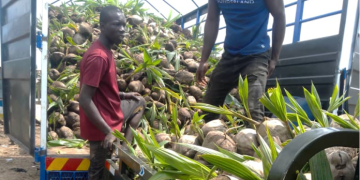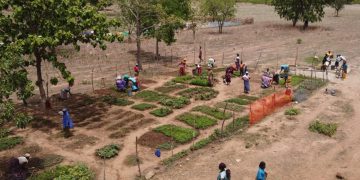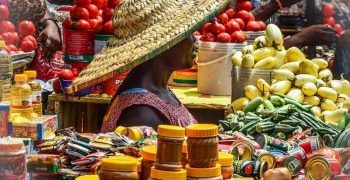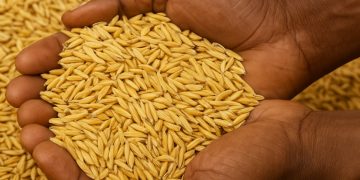Ghanaians have witness a downwards curve of food inflation in recent times as rice, oil, and sugar lead with a “fair” price reduction in the market.
These three food items remain highly consumed in Ghanaian homes depicting their high level of demand, which drags along concerns over their prices in the market even though price factor does not necessarily affects supply.
Exploring the market by Agriwatch News, following reports from prominent economic monitoring entities such as Ghana Statistical Service, Bloomburg, Economic Focus stating October’s inflation to be 8.0% and food inflation (Food and Alcoholic beverages) 9.5%, reveals a reflection of the figures in the market.
some traders and market women pointed out how prices have been going down recently, easing Ghanaians and opening up the market.
The prices of these staple commodities are heavily influenced by global market conditions, Ghana’s heavy reliance on imports, and the strength of the local currency (Ghana Cedi). Recent data suggests some easing in prices compared to peak periods, though volatility remains.
Rice is a significant import for Ghana, making its price highly sensitive to international and currency movements. Sellers highlighted that, “there has been a noticeable decline in retail prices in late 2025 compared to earlier in the year.” They disclosed that, “a 25kg bag of a popular rice
brand dropped from around GH₵650 to approximately GH₵510 (and even lower with some brands and in some markets), and the 5kg has dropped from GH₵240 to a range between GH₵155 and GH₵70 depending on the brand and quality.”
The rice sellers said, “the market is booming gradually in recent times as conditions of availability and prices are not of a major concern compared to previous experiences.”
Like rice, the price of cooking oil (vegetable and other oils) is strongly tied to global edible oil prices and the exchange rate.
Traders of cooking oil revealed that commodity has also experienced a significant price decline. According to them, “a large container of 25 litres of cooking oil saw a sharp drop from around GH₵980 earlier in the year to approximately GH₵510 to GH₵640 by the second half of 2025.”
It was disclosed that “typical retail prices for 1L Vegetable Oil as at November 2025 stand between GH₵55.00 to GH₵90.00, whereas 4.5L Vegetable Cooking Oil prices are around GH₵235.00 to GH₵270.00.”
Reports indicates that the decline is likely attributed to a projected fall in the global Oils and Meals index, which was forecast to decline by 7% in 2025. However, the major influence is associated to the stability of the Ghana Cedi by local economic actors which the traders belief is not far from this assertion.
Similar to rice and oil, sugar prices have also shown signs of moderation. Sugar sellers pointed out that, “an ‘Olonka’ which is a local volumetric measure of sugar has dropped by about GH₵10, selling between GH₵38 and GH₵40 in the second half of 2025.” They emphasized that “price of 1kg Fine/Brown Sugar is generally between GH₵30.00 and GH₵44.00, and 5kg Fine Sugar is around GH₵149.00.”
Just like rice and cooking oil, Ghana imports the majority of its sugar, making it susceptible to global price swings and forex volatility. Notwithstanding, both sellers and buyers are enjoying the moment of prices decline and enhancing transactions.
Sellers are optimistic that the current market trend and food inflation in the country will keep the momentum going into the Christmas festive season to reap the fruit of their labour.






















































